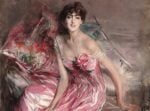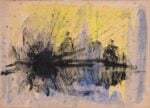Haim Steinbach – Lemon yellow
.jpg)
Dalla fine degli anni Settanta l’arte di Haim Steinbach si è focalizzata sulla selezione e disposizione di oggetti: in particolare, oggetti di uso quotidiano. Per portarli alla luce, Steinbach crea dei dispositivi espositivi, delle strutture di presentazione.
Comunicato stampa
Galleria Lia Rumma is pleased to announce lemon yellow, a solo exhibition of Haim Steinbach, which will open on 25 May 2017 in the Naples gallery. Since the late 1970s Haim Steinbach’s art has been centered around the selection and arrangement of objects. Above all, everyday objects have been his focus. To bring them to light, Steinbach has conceived of framing devices; structures for presentation. Ranging from the natural to the ordinary, the artistic to the ethnographic, Steinbach explores the psychological, aesthetic, cultural and ritualistic aspects of objects and their contexts. Through his particular mode of presentation, he gives form to artworks that underscore the identity contained within objects and the meanings created through their interactions. In the process, Steinbach has redefined the status of the object in art. In the early seventies, Steinbach developed a reductive form of painting consisting of arrangements of rectangles or coloured bars based on the grid. They were considered as units of measurement that marked space and time. Like the keys of the piano or bricks that may be stacked, these ‘objects’ lent themselves to play. By the end of the seventies, these ideas led to a series of works titled “Display”. In the display, the wall, the shelf, and the object were activated as reflexive indicators of social, cultural, and political everyday life. Both functional and aesthetic objects have become key elements in Steinbach’s artistic practice: “It is reflecting the displayed being displayed, display is presentation,” says the artist. “It is the consciousness of being present and participating in rituals of communication, in dressing, selecting, arranging, and placing of things.”
With lemon yellow, Steinbach returns to Naples, and the gallery that put on his first solo exhibition in Europe in 1987. The focus is now on the mutability of meanings available within an object as it pertains to colour and form. In particular, the ways in which architecture is object regardless of shape, form, colour or scale. Like architecture, an object occupies space like the interior or exterior of a volume. Employing standard building materials like metal studs and coloured plaster boards, Steinbach renders walls throughout the space. As these units engage with the gallery interior, permanent walls, windows, and ceiling, another set of objects define and are defined by the interiors of autonomous boxes designed by the artist. Here the exchange of object and space is extended to a collaboration between the artist and collectors. Each collector was asked to select an object of significance evoking an idea or sensation of colour. These objects – a notary public’s seal, a locomotive, Joseph Beuys’s work Capri Battery, and Mickey Mouse – are presented along side a work with an object selected by the artist, - a caterpillar - and have been placed in boxes like showcases hung on the wall. Together they become a manifestation of the shared social ritual of collecting and exhibiting. By reconfiguring space in this way, Steinbach asks us to reorient our relationship to a built environment usually overlooked. Here, architecture advances into the foreground, reminding us that it is made up of culturally resonant materials and surfaces.
***
La Galleria Lia Rumma è lieta di annunciare lemon yellow, la mostra personale di Haim Steinbach che inaugurerà il 25 maggio 2017 nella sede di Napoli. Dalla fine degli anni Settanta l’arte di Haim Steinbach si è focalizzata sulla selezione e disposizione di oggetti: in particolare, oggetti di uso quotidiano. Per portarli alla luce, Steinbach crea dei dispositivi espositivi, delle strutture di presentazione. Spaziando dal naturale all’ordinario e dall’artistico all’etnografico, l’artista esplora gli aspetti psicologici, estetici, culturali e rituali degli oggetti e dei loro contesti. Attraverso la sua peculiare modalità di presentazione, Steinbach dà forma ad opere tese a sottolineare l’identità contenuta negli oggetti stessi e i significati creati attraverso la loro interazione. Tramite questo processo, l’artista ha ridefinito lo status dell’oggetto nell’arte. Nei primi anni Settanta, Steinbach sviluppò una forma riduttiva di pittura che consisteva nella disposizione a griglia di rettangoli o barre colorate. Erano da intendersi come unità di misura, demarcavano spazio e tempo. Come tasti di pianoforte o mattoncini impilabili, gli ‘oggetti’ si prestavano al gioco. Alla fine degli anni Settanta queste idee portarono a una serie di lavori intitolata “Display”. Nell’esposizione, il muro, lo scaffale e l’oggetto sono utilizzati come indicatori che riflettono la vita sociale, culturale e politica di tutti i giorni. Oggetti di tipo sia funzionale che puramente estetico diventano gli elementi chiave della pratica artistica di Steinbach: «Si tratta di riflettere l’oggetto in quanto “allestito”: “display” è presentazione – ha detto l’artista –. È la consapevolezza di essere presenti e di partecipare ai rituali della comunicazione, alla preparazione, alla sistemazione, alla selezione e alla disposizione delle cose».
Con lemon yellow, Steinbach ritorna a esporre a Napoli, nella galleria che nel 1987 ospitò la sua prima personale europea. L’attenzione è ora focalizzata sulla mutevolezza dei significati propri di un oggetto, relativamente al colore e alla forma. In particolare, i modi in cui l’architettura è oggetto al di là del suo aspetto, forma, colore o dimensione. Come l’architettura, anche l’oggetto occupa spazio, sia esso l’interno o l’esterno di un volume. Utilizzando semplici materiali da costruzione - profili metallici e pannelli di cartongesso colorati - Steinbach ci mostra la rappresentazione delle pareti all’interno dello spazio. Queste unità si relazionano con gli interni della galleria, i muri portanti, le finestre e il soffitto, allo stesso modo in cui un altro gruppo di oggetti si definisce ed è definito dagli interni di contenitori indipendenti creati dall’artista. In questo caso, il dialogo tra oggetto e spazio si estende alla collaborazione tra l’artista e i collezionisti. A ciascun collezionista è stato chiesto di selezionare un oggetto significativo, capace di evocare un’idea o sensazione di colore. Questi oggetti – un sigillo notarile, una locomotiva, l’opera di Joseph Beuys Capri Battery e Mickey Mouse – sono presentati accanto a un lavoro-oggetto scelto dall’artista – un bruco – e posizionati in contenitori analoghi a teche espositive a parete. Insieme, diventano segni ostensivi di quei rituali condivisi che sono il collezionare e l’esporre. Riconfigurando così lo spazio, Steinbach ci chiede di riorientare la nostra relazione con quell’ambiente antropizzato a cui di solito non prestiamo attenzione. Qui l’architettura si pone in primo piano, ricordandoci che essa stessa si compone di materiali e superfici culturalmente rilevanti.



